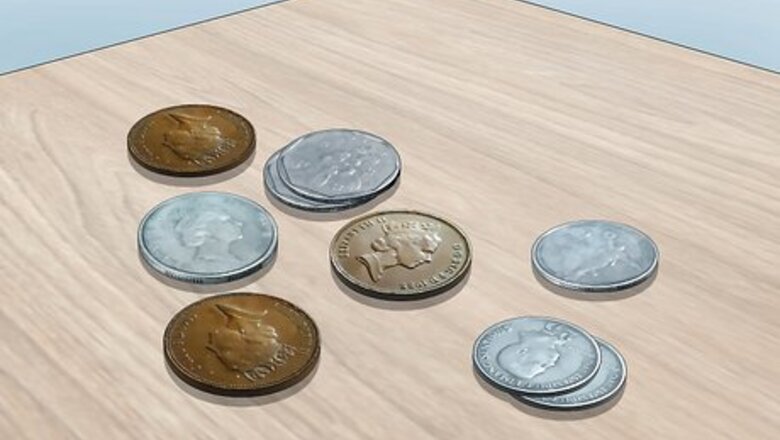
views
Caring for Valuable Coins

Leave your old coins as they are. Although it may seem counterintuitive, the best course of action when dealing with dirty coins is simply to leave them as they are. If a coin is in good condition, with only a small amount of smudging or tarnish on the face or back, it will be worth more to a collector in this condition than if you clean it. Nearly all types of cleaning will substantially decrease the monetary value of your coins, especially if the face or back is damaged in the process.
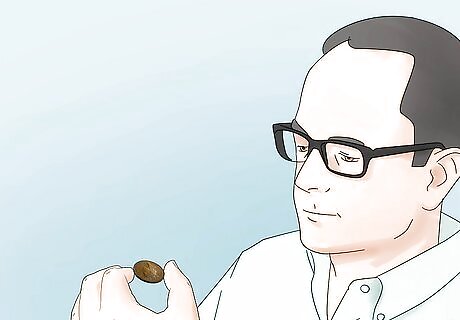
Have a coin expert inspect your old coins. If you’re not an expert yourself, but are wondering if your old coins may be worth any money, take them to an expert before cleaning. The expert will be able to advise you as to whether or not you should undertake cleaning the coins. If the coins are unique or valuable, the expert will likely advise you not to clean them. A numismatist—an expert on money and coins—will also be able to advise you as to the worth of your collection. The more valuable a coin is, the less reason you have to clean it.
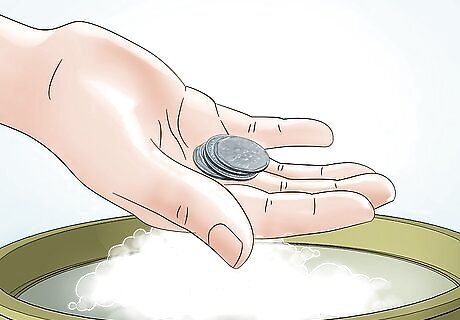
Clean only worthless or filthy coins. If you have coins that have little value and you are not planning to collect or sell to a collector, you may wish to clean these for purely aesthetic reasons. It’s also up to you whether or not to clean extremely dirty coins. If a coin is so blackened or tarnished that its face is all but invisible, you may decide to accept the risk and clean it. If you’re in doubt as to whether a coin has any value, should be cleaned, or is worth keeping in a coin collection, always take the coin to an expert before you try to clean it. It would be a shame to find out that you’ve cut the value of a rare coin in half by cleaning it.
Practicing Non-Destructive Cleaning
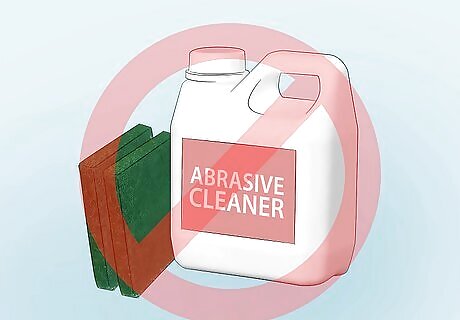
Never clean coins with abrasives or acids. Although abrasive products are often advertised on TV or in stores as effective for cleaning coins, this is not the case. Acidic cleaners remove some of the material of the coin’s surface during the process of cleaning it. Although this will make the coin look cleaner and improve its shine, the coin will be damaged and its value diminished. Similarly, you should never scrub or scrape coins in order to remove tarnish or blackness. Products like steel wool or wire brushes will irreversibly damage your coins and remove their value.
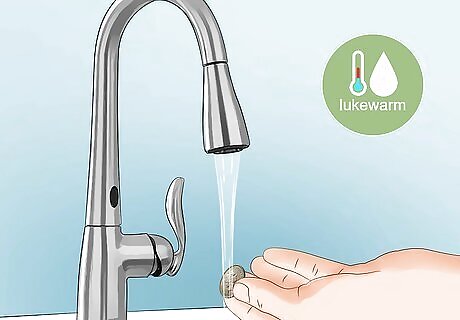
Clean old coins with water. To clean your coins without risking damage to the surface and a reduction of value, you should use only water. Grasp a coin by the edges, and hold it under a gentle stream of lukewarm distilled water. Flip the coin over so that the reverse side is also wet. Then, gently pat the coin dry with a soft cotton towel. This will remove some superficial dirt without scratching the coin. If you live in a city, the tap water will be treated with chlorine. This chemical will discolor the face of your coin. To avoid this, either purchase distilled water from your supermarket, or clean coins under water from a purifier.

Clean old coins in a weak soap solution. If the distilled water was too weak to effectively clean the surface of a dirty or encrusted coin, the only other non-damaging option is to use a weak soap solution. Pour a small amount of a weak liquid soap into a large bowl, and then fill the bowl with tepid distilled water. Grasp your coin by the edges, and swirl it around in the soap solution. Then rinse the coin under distilled water and pat dry with a clean cloth. Do not use dish detergent to clean your coins; it’s too powerful and abrasive. Instead, use a weak, gentle soap, such as hand soap.
Cleaning Specific Types of Old Coins
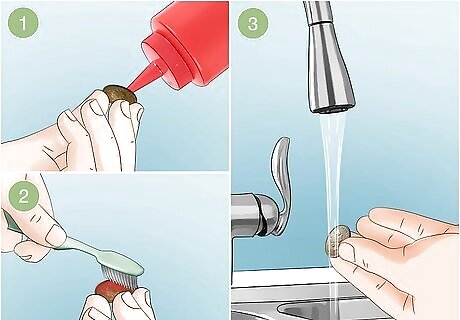
Scrub old pennies with ketchup. To clean a copper penny, squeeze out a small amount of tomato ketchup onto the face and back of the coin. While you’re grasping the coin firmly by its edges, use a clean toothbrush to lightly scrub the flat surfaces of the coin. The salt and vinegar in the ketchup will remove tarnish from the penny. Then rinse the coin clean under distilled water and pat dry with a clean cloth. This practice works best on pennies produced before 1982. Pre-1982 pennies were made using real copper, whereas post-1982 pennies contain zinc, which will not be cleaned with ketchup. Be aware that ketchup is mildly acidic, and so may end up reducing the penny’s value.
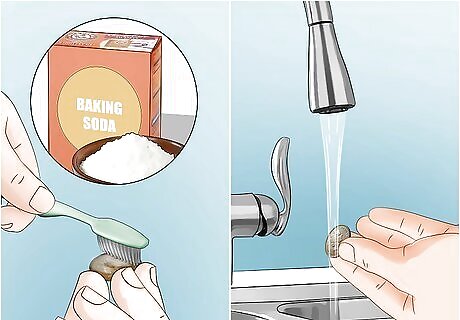
Clean old silver coins with baking soda. Begin by running the coin under distilled water. Then, hold the coin firmly by its edges. Using your fingers or a clean toothbrush, apply a small amount of baking soda to the face and back of your coin and lightly rub. The baking soda will remove black and tarnish from the surfaces of the coin. Rinse the coin under distilled water again, and pat dry with a clean cloth. This process will be most effective on older silver coins. It may be less effective on newer coins that contain less—or no—actual silver.
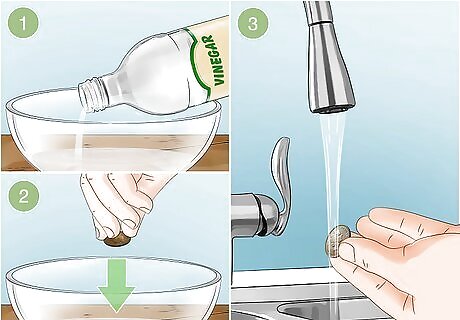
Clean old coins with vinegar. White vinegar is a common cleaning agent which many people use to clean metals, including jewelry. To clean an old coin with vinegar, pour a cup of vinegar into a glass or bowl, and then gently set the coin at the bottom. Let the coin soak for a few minutes. Then grasp the coin by its edges, pull it out of the vinegar, and rinse it clean with distilled water. If the coin is still tarnished or dirty, try brushing it gently with a soft toothbrush. Be careful not to scratch the surface of the coin, however. If the coin does not look cleaner after a few minutes, place it back in the vinegar for a few hours. Very dirty old coins can even be left soaking in vinegar overnight.














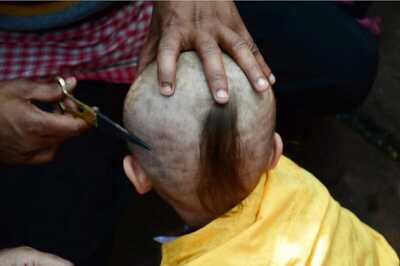
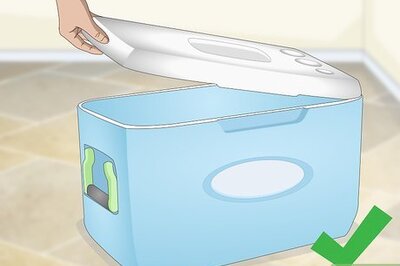
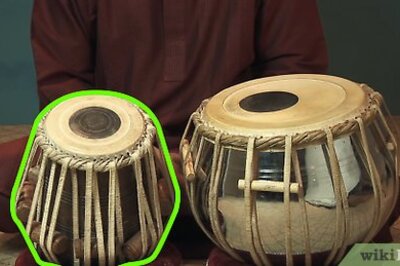
Comments
0 comment